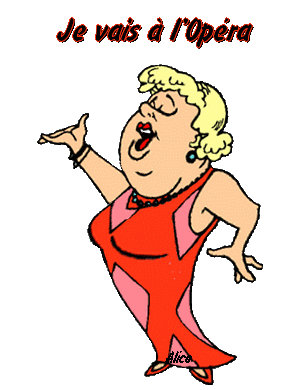Bel Canto

Bel Canto (Italian for "beautiful singing" or "beautiful song", pronounced [ˌbɛl ˈkanto]) with several similar constructions (bellezze del canto, bell'arte del canto) is a term with several meanings that relate to Italian singing.
The phrase was not associated with a "school" of singing until the middle of the 19th century, when writers in the early 1860s used it nostalgically to describe a manner of singing that had begun to wane around 1830. Nonetheless, "neither musical nor general dictionaries saw fit to attempt [a] definition [of bel canto] until after 1900". The term remains vague and ambiguous in the 21st century and is often used to evoke a lost singing tradition.
👇♪ 📽 ♪ 👇
Renée Fleming
Casta Diva - Bellini
America's Queen of Opera performs in the Palaces of the Czars in Saint Petersburg.
Renée Fleming
Casta Diva - Bellini
America's Queen of Opera performs in the Palaces of the Czars in Saint Petersburg.
Renee Fleming
This is a favorite recording of Bellini's "Casta Diva." After listening to the performance, you'll understand why. Fleming performs with such ease and clarity, it allows the music to outshine the singer.
What's more, her diction is impeccable.
👇 ♪ 📽 ♪ 👇
Bel Canto in the 18th and early 19th Centuries
Since the bel canto style flourished in the 18th and early 19th centuries, the music of Handel and his contemporaries, as well as that of Mozart and Rossini, benefits from an application of bel canto principles. Operas received the most dramatic use of the techniques, but the bel canto style applies equally to oratorio, though in a somewhat less flamboyant way. The da capo arias these works contained provided challenges for singers, as the repeat of the opening section prevented the story line from progressing. Nonetheless, singers needed to keep the emotional drama moving forward, and so they used the principles of bel canto to help them render the repeated material in a new emotional guise. They also incorporated embellishments of all sorts (Domenico Corri said da capo arias were invented for that purpose [The Singer's Preceptor, vol. 1, p. 3]), but not every singer was equipped to do this, some writers, notably Domenico Corri himself, suggesting that singing without ornamentation was an acceptable practice (see The Singer's Preceptor, vol. 1, p. 3). Singers regularly embellished both arias and recitatives, but did so by tailoring their embellishments to the prevailing sentiments of the piece.Two famous 18th-century teachers of the style were Antonio Bernacchi (1685–1756) and Nicola Porpora (1686–1768), but many others existed. A number of these teachers were castrati. Singer/author John Potter declares in his book Tenor: History of a Voice that:
For much of the 18th century castrati defined the art of singing; it was the loss of their irrecoverable skills that in time created the myth of bel canto, a way of singing and conceptualizing singing that was entirely different from anything that the world had heard before or would hear again.
👇♪ 📽 ♪ 👇
Maria Callas
Norma - Casta Diva - Bellini
Maria Callas
Norma - Casta Diva - Bellini
Bel Canto in 19th-Century Italy and France
In another application, the term bel canto is sometimes attached to Italian operas written by Vincenzo Bellini (1801–1835) and Gaetano Donizetti (1797–1848). These composers wrote bravura works for the stage during what musicologists sometimes call the "bel canto era". But the style of singing had started to change around 1830, Michael Balfe writing of the new method of teaching that was required for the music of Bellini and Donizetti (A New Universal Method of Singing, 1857, p. iii), and so the operas of Bellini and Donizetti actually were the vehicles for a new era of singing. The last important opera role for a castrato was written in 1824 by Giacomo Meyerbeer (1791–1864).
The phrase "bel canto" was not commonly used until the latter part of the 19th century, when it was set in opposition to the development of a weightier, more powerful style of speech-inflected singing associated with German opera and, above all, Richard Wagner's revolutionary music dramas. Wagner (1813–1883) decried the Italian singing model, alleging that it was concerned merely with "whether that G or A will come out roundly". He advocated a new, Germanic school of singing that would draw "the spiritually energetic and profoundly passionate into the orbit of its matchless Expression."
French musicians and composers never embraced the more florid extremes of the 18th-century Italian bel canto style. They disliked the castrato voice and because they placed a premium on the clear enunciation of the texts of their vocal music, they objected to the sung word being obscured by excessive fioritura.



The popularity of the bel canto style as espoused by Rossini, Donizetti and Bellini faded in Italy during the mid-19th century. It was overtaken by a heavier, more ardent, less embroidered approach to singing that was necessary to perform the innovative works of Giuseppe Verdi (1813–1901) with maximum dramatic impact. Tenors, for instance, began to inflate their tone and deliver the high C (and even the high D) directly from the chest rather than resorting to a suave head voice/falsetto as they had done previously – sacrificing vocal agility in the process. Sopranos and baritones reacted in a similar fashion to their tenor colleagues when confronted with Verdi's drama-filled compositions. They subjected the mechanics of their voice production to greater pressures and cultivated the exciting upper part of their respective ranges at the expense of their mellow but less penetrant lower notes. Initially at least, the singing techniques of 19th-century contraltos and basses were less affected by the musical innovations of Verdi, which were built upon by his successors Amilcare Ponchielli (1834–1886) and Arrigo Boito (1842–1918).

Bel Canto and its Detractors
One reason for the eclipse of the old Italian singing model was the growing influence within the music world of bel canto's detractors, who considered it to be outmoded and condemned it as vocalization devoid of content. To others, however, bel canto became the vanished art of elegant, refined, sweet-toned musical utterance. Rossini lamented in a conversation that took place in Paris in 1858 that: "Alas for us, we have lost our bel canto". Similarly, the so-called German style was as derided as much as it was heralded. In the introduction to a collection of songs by Italian masters published in 1887 in Berlin under the title Il bel canto, Franz Sieber wrote: "In our time, when the most offensive shrieking under the extenuating device of 'dramatic singing' has spread everywhere, when the ignorant masses appear much more interested in how loud rather than how beautiful the singing is, a collection of songs will perhaps be welcome which – as the title purports – may assist in restoring bel canto to its rightful place."
In the late-19th century and early-20th century, the term "bel canto" was resurrected by singing teachers in Italy, among whom the retired Verdi baritone Antonio Cotogni (1831–1918) was a pre-eminent figure. Cotogni and his followers invoked it against an unprecedentedly vehement and vibrato-laden style of vocalism that singers increasingly used after around 1890 to meet the impassioned demands of verismo writing by composers such as Giacomo Puccini (1858–1924), Ruggero Leoncavallo (1857–1919), Pietro Mascagni (1863–1945) and Umberto Giordano (1867–1948), as well as the auditory challenges posed by the non-Italianate stage works of Richard Strauss (1864–1949) and other late-romantic/early-modern era composers, with their strenuous and angular vocal lines and frequently dense orchestral textures.
During the 1890s, the directors of the Bayreuth Festival initiated a particularly forceful style of Wagnerian singing that was totally at odds with the Italian ideals of bel canto. Called "Sprechgesang" by its proponents (and dubbed the "Bayreuth bark" by some opponents), the new Wagnerian style prioritized articulation of the individual words of the composer's libretti over legato delivery. This text-based, anti-legato approach to vocalism spread across the German-speaking parts of Europe prior to World War I.
As a result of these many factors, the concept of bel canto became shrouded in mystique and confused by a plethora of individual notions and interpretations. To complicate matters further, German musicology in the early 20th century invented its own historical application for "bel canto", using the term to denote the simple lyricism that came to the fore in Venetian opera and the Roman cantata during the 1630s and '40s (the era of composers Antonio Cesti, Giacomo Carissimi and Luigi Rossi) as a reaction against the earlier, text-dominated stile rappresentativo. Unfortunately, this anachronistic use of the term bel canto was given wide circulation in Robert Haas's Die Musik des Barocks and, later, in Manfred Bukofzer's Music in the Baroque Era. Since the singing style of later 17th-century Italy did not differ in any marked way from that of the 18th century and early 19th century, a connection can be drawn; but, according to Jander, most musicologists agree that the term is best limited to its mid-19th-century use, designating a style of singing that emphasized beauty of tone and technical expertise in the delivery of music that was either highly florid or featured long, flowing and difficult-to-sustain passages of cantilena.

Bel Canto and its Detractors
One reason for the eclipse of the old Italian singing model was the growing influence within the music world of bel canto's detractors, who considered it to be outmoded and condemned it as vocalization devoid of content. To others, however, bel canto became the vanished art of elegant, refined, sweet-toned musical utterance. Rossini lamented in a conversation that took place in Paris in 1858 that: "Alas for us, we have lost our bel canto". Similarly, the so-called German style was as derided as much as it was heralded. In the introduction to a collection of songs by Italian masters published in 1887 in Berlin under the title Il bel canto, Franz Sieber wrote: "In our time, when the most offensive shrieking under the extenuating device of 'dramatic singing' has spread everywhere, when the ignorant masses appear much more interested in how loud rather than how beautiful the singing is, a collection of songs will perhaps be welcome which – as the title purports – may assist in restoring bel canto to its rightful place."
In the late-19th century and early-20th century, the term "bel canto" was resurrected by singing teachers in Italy, among whom the retired Verdi baritone Antonio Cotogni (1831–1918) was a pre-eminent figure. Cotogni and his followers invoked it against an unprecedentedly vehement and vibrato-laden style of vocalism that singers increasingly used after around 1890 to meet the impassioned demands of verismo writing by composers such as Giacomo Puccini (1858–1924), Ruggero Leoncavallo (1857–1919), Pietro Mascagni (1863–1945) and Umberto Giordano (1867–1948), as well as the auditory challenges posed by the non-Italianate stage works of Richard Strauss (1864–1949) and other late-romantic/early-modern era composers, with their strenuous and angular vocal lines and frequently dense orchestral textures.
During the 1890s, the directors of the Bayreuth Festival initiated a particularly forceful style of Wagnerian singing that was totally at odds with the Italian ideals of bel canto. Called "Sprechgesang" by its proponents (and dubbed the "Bayreuth bark" by some opponents), the new Wagnerian style prioritized articulation of the individual words of the composer's libretti over legato delivery. This text-based, anti-legato approach to vocalism spread across the German-speaking parts of Europe prior to World War I.
As a result of these many factors, the concept of bel canto became shrouded in mystique and confused by a plethora of individual notions and interpretations. To complicate matters further, German musicology in the early 20th century invented its own historical application for "bel canto", using the term to denote the simple lyricism that came to the fore in Venetian opera and the Roman cantata during the 1630s and '40s (the era of composers Antonio Cesti, Giacomo Carissimi and Luigi Rossi) as a reaction against the earlier, text-dominated stile rappresentativo. Unfortunately, this anachronistic use of the term bel canto was given wide circulation in Robert Haas's Die Musik des Barocks and, later, in Manfred Bukofzer's Music in the Baroque Era. Since the singing style of later 17th-century Italy did not differ in any marked way from that of the 18th century and early 19th century, a connection can be drawn; but, according to Jander, most musicologists agree that the term is best limited to its mid-19th-century use, designating a style of singing that emphasized beauty of tone and technical expertise in the delivery of music that was either highly florid or featured long, flowing and difficult-to-sustain passages of cantilena.

The Bel Canto Revival
In the 1950s, the phrase "bel canto revival" was coined to refer to a renewed interest in the operas of Donizetti, Rossini and Bellini. These composers had begun to go out of fashion during the latter years of the 19th century and their works, while never completely disappearing from the performance repertoire, were staged infrequently during the first half of the 20th century, when the operas of Wagner, Verdi and Puccini held sway. That situation changed significantly after World War II with the advent of a group of enterprising orchestral conductors and the emergence of a fresh generation of singers such as Montserrat Caballé, Maria Callas, Joan Sutherland, Beverly Sills and Marilyn Horne, who had acquired bel canto techniques.
These artists breathed new life into Donizetti, Rossini and Bellini's stage compositions, treating them seriously as music and re-popularizing them throughout Europe and America. Today, some of the world's most frequently performed operas, such as Rossini's The Barber of Seville and Donizetti's Lucia di Lammermoor, are from the bel canto era.
Many 18th-century operas that require adroit bel canto skills have also experienced post-war revivals, ranging from lesser-known Mozart and Haydn to extensive Baroque works by Handel, Vivaldi and others.
In the 1950s, the phrase "bel canto revival" was coined to refer to a renewed interest in the operas of Donizetti, Rossini and Bellini. These composers had begun to go out of fashion during the latter years of the 19th century and their works, while never completely disappearing from the performance repertoire, were staged infrequently during the first half of the 20th century, when the operas of Wagner, Verdi and Puccini held sway. That situation changed significantly after World War II with the advent of a group of enterprising orchestral conductors and the emergence of a fresh generation of singers such as Montserrat Caballé, Maria Callas, Joan Sutherland, Beverly Sills and Marilyn Horne, who had acquired bel canto techniques.
These artists breathed new life into Donizetti, Rossini and Bellini's stage compositions, treating them seriously as music and re-popularizing them throughout Europe and America. Today, some of the world's most frequently performed operas, such as Rossini's The Barber of Seville and Donizetti's Lucia di Lammermoor, are from the bel canto era.
Many 18th-century operas that require adroit bel canto skills have also experienced post-war revivals, ranging from lesser-known Mozart and Haydn to extensive Baroque works by Handel, Vivaldi and others.
👇♪ 📽 ♪ 👇
Dame Joan Sutherland
"Casta Diva"
Just as many people believe Maria Callas is the only Tosca, thanks to her incredible performances of Puccini's aria, "Vissi d'Arte",Dame Joan Sutherland is thought to be the only Norma that matters. She set the bar. Her powerful voice soars effortlessly through the aria's high notes and ornamentation.
Play Video
👇 ♪ 📽 ♪ 👇
👇 ♪ 📽 ♪ 👇
Vincenzo Bellini: "Norma ♫ Casta Diva"
Sung in the first act of Vincenzo Bellini’s famous opera, the high priestess Norma is visited by a group of angry Druids. They beseech her to declare war on Rome after the Roman soldiers occupied the Druids’ land and began oppressing their citizens. Norma assuages their fury and convinces them that now is not the time to fight. If they are patient, the Romans will fall by their own doing; an intervention is not necessary. What is not known by the other Druids is that Norma has fallen in love with a Roman. She secretly hopes no war will be fought so that her lover will be safe.
Norma sings a prayer to the moon goddess asking her for peace.
♫ ♫ ♫Casta Diva
Che inargenti Queste sacre antiche piante, A noi volgi il bel sembiante Senza nube e senza vel... Tempra, o diva, Tempra tu de' cori ardenti Tempra ancora lo zelo audace, Spargi in terra quella pace Che regnar tu fai nel ciel.
♫ ♫ ♫
Virtuous Goddess
Virtuous Goddess, covering with silver these sacred ancient plants, turn towards us your fair face cloudless and unveiled Temper, oh Goddess, you temper the ardent hearts furthermore temper the audacious zeal, spread on earth the same peace that make you make reign in heaven
♫ ♫ ♫
'Casta Diva' Lyrics, Translation, and History - From Vincenzo Bellini's Famous Opera 'Norma' by Aaron Green September 05, 2018
♫ ♫ ♫


Recommended "Casta Diva"
Sopranos and Recordings
Sopranos and Recordings
Montserrat Caballe
You'll get goosebumps listening to Montserrat Caballe sing the last few bars of the aria - her powerful forte voice fades into almost whisper-like pianissimo.
History of Bellini's Opera, "Norma"
Vincenzo Bellini began composing the opera, "Norma," after negotiating a two-opera contract with the managing members of the La Scala and La Fenice Italian opera houses in 1830. "Norma" was set to premiere at La Scala in Milan the following year, while his second opera, "Beatrice di Tenda," was set to premiere at La Fenice in Venice in 1832. Bellini chose to set Alexandre Soumet's French play "Norma, ossia L'infanticidio" (Norma, or The Infanticide) to music and picked Felice Romani to write the libretto. Romani, born in 1788 and died in 1865, was an Italian poet with interests in French literature, antiquities, and mythology, and he was highly sought after - he wrote well over 50 librettos including those for Bellini, Donizetti, and many other well-known composers. Both Bellini and Romani were highly respected in their fields so they often butted heads over the libretto due to their stubbornness to change their opinions and concede to a compromise. After much debate and deliberation, when the libretto was finally finished Bellini was able to set it to music.
"Norma" premiered at La Scala on Dec. 26, 1831, and it was a great success. Since its creation and premiere, Bellini's
"Norma" is regarded as the best example of "bel canto" music.
Montserrat Caballe
"Casta Diva" Norma
"Casta Diva" Norma
Orange 1974
(Subtitles: Italian and English)
👇♪ 📽 ♪ 👇

Norma is a tragedia lirica or opera in two acts by Vincenzo Bellini with libretto by Felice Romani after the play Norma, ou L'infanticide (Norma, or The Infanticide) by Alexandre Soumet. It was first produced at La Scala in Milan on 26 December 1831.
The opera is regarded as a leading example of the bel canto genre, and the soprano prayer Casta diva in Act I is a famous piece. Notable exponents of the title role in the post-war period have been Maria Callas, Joan Sutherland, Montserrat Caballé and, in the 2007 Biondi-Minasi critical edition based on Bellini's autograph score, Cecilia Bartoli.
The opera is regarded as a leading example of the bel canto genre, and the soprano prayer Casta diva in Act I is a famous piece. Notable exponents of the title role in the post-war period have been Maria Callas, Joan Sutherland, Montserrat Caballé and, in the 2007 Biondi-Minasi critical edition based on Bellini's autograph score, Cecilia Bartoli.
Vincenzo Bellini, Norma, Act I: "Casta Diva".
Cecilia Bartoli
👇 ♪ 📽 ♪ 👇
M.J. S. F. Please, do not compare with other singers. This version sung by Cecilia Bartoli is the version that was adapted for the "Malibran" therefore it is not a version for a soprano but for a mezzo-soprano.
Cecilia Bartoli loves the "Malibran" and she definitely wanted to sing this version. You must admit that she is excellent! It has nothing to do with what you can hear with Maria Callas or other wonderful singers. It is just different. All of them are wonderful but DIFFERENT.
👇♪ 📽 ♪ 👇
Sonya Yoncheva
The Royal Opera
Norma ♫ Casta Diva
Sonya Yoncheva
The Royal Opera
Norma ♫ Casta Diva
The priestess Norma leads her people in a prayer for peace. Sonya Yoncheva sings the title role in Bellini's masterpiece, with the Royal Opera Chorus and the Orchestra of the Royal Opera House conducted by Antonio Pappano, recorded September 2016. Find out more at http://www.roh.org.uk/norma
Bellini’s bel canto masterpiece Norma had its premiere at La Scala, Milan, on Boxing Day 1831. After a muted initial response the opera quickly became popular, and is now a mainstay of the repertory. Norma is perhaps most acclaimed as a vehicle for the lead soprano, most famously now by such 20th-century greats as Maria Callas, Montserrat Caballé and Joan Sutherland. Indeed, Bellini provides some astonishing vocal fireworks for his title character – most famously ‘Casta diva’, Norma’s Act I hymn to the chaste moon, and Act II’s ‘Dormono entrambi’, as she contemplates the unthinkable act of killing her children. But the opera’s dramatic potency rests in its breathtaking ensembles, most strikingly in Norma’s duets with Pollione and Adalgisa, the Act I trio ‘Vanne, sì: mi lascia, indegno’ and the blistering Act II finale.
Bellini’s bel canto masterpiece Norma had its premiere at La Scala, Milan, on Boxing Day 1831. After a muted initial response the opera quickly became popular, and is now a mainstay of the repertory. Norma is perhaps most acclaimed as a vehicle for the lead soprano, most famously now by such 20th-century greats as Maria Callas, Montserrat Caballé and Joan Sutherland. Indeed, Bellini provides some astonishing vocal fireworks for his title character – most famously ‘Casta diva’, Norma’s Act I hymn to the chaste moon, and Act II’s ‘Dormono entrambi’, as she contemplates the unthinkable act of killing her children. But the opera’s dramatic potency rests in its breathtaking ensembles, most strikingly in Norma’s duets with Pollione and Adalgisa, the Act I trio ‘Vanne, sì: mi lascia, indegno’ and the blistering Act II finale.
👇♪ 📽👇
Montserrat Caballé
Casta Diva ♫ Norma ♫ Bellini
Liverpool 1992



Casta Diva ♫ Norma ♫ Bellini
Liverpool 1992




No comments:
Post a Comment